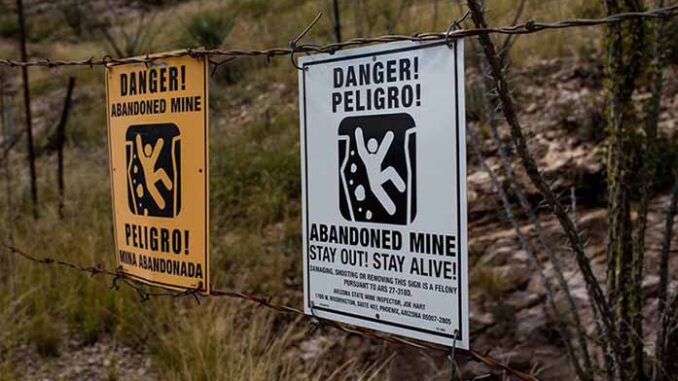
WASHINGTON – Arizona could have as many as 100,000 abandoned mines, many leaching toxic minerals into the state’s waterways, but state environmental officials said cleanup has been hampered by the fear of litigation.
That’s why Arizona Department of Environmental Quality Director Misael Cabrera was testifying Thursday in support of a proposed federal “good Samaritan” law aimed at addressing the issue. The bill would let organizations step in and clean up long-abandoned mines without fear of the legal liability that could have attached to their now-absent owners.
“I believe that this legislation is a great first step towards dealing with a considerable and significant problem all across the country, and certainly in the West,” Cabrera said after testifying to a Senate Environment and Public Works subcommittee hearing.
That problem is that many of the mines that would be affected by the bill were abandoned by their owners long ago, decades before laws took effect that hold mine owners responsible for cleanup of their properties. And under the law as it’s written now, new owners – or anyone who wanted to clean up a site – could be held legally responsible for the damages it caused.
“One factor that keeps unrelated third parties from voluntarily cleaning up these sites is that under federal law, liability for pollution cleanup attaches to any person or entity that touches a pollution site for any purpose – even just to clean it up,” said Sen. Martin Heinrich, D-N.M., and one of the sponsors of the bill.
Cabrera said he has seen that in Arizona, when working with groups that were thinking about remediation of an abandoned site.
“It serves as a barrier and an obstacle to volunteers, nonprofits, new owners, or even states that want to clean up a site,” Cabrera said of the current law.
Under the bill, the Environmental Protection Agency could grant up to 15 “good Samaritan” permits for cleanup of mines across the country. The remediation would have to meet environmental safety standards, but the people doing the cleanup would not assume the liability of the original owners.
The permits could not be granted for any mine on the EPA’s list of Superfund toxic sites, to a mine whose original owner could be located, or to a mine that was in production after Dec. 11, 1980 – the date the Superfund law was approved.
Arizona Democratic Sen. Mark Kelly said abandoned mines pose a double threat in the state, where hazardous minerals pose a threat to public health and to the water supply at a time when the region is gripped by drought.
“Abandoned zinc, copper and lead mines pose a risk to surface water and groundwater quality at the same time as we have this historic drought,” Kelly said at the hearing. “These threats are threats to potential sources of drinking water and they need to be taken seriously.”
He pressed Cabrera on his testimony that 120 miles of streams in the state do not meet Clean Water Act standards, many of them tainted by minerals frequently associated with hardrock mines. Cabrera said 93 miles of those streams are tributaries of the major water-supply rivers in the state: the Gila, Salt, Verde and Colorado rivers.
While the proposal was generally well-received at the hearing, the policy director for Earthworks testified that there need to be more “guardrails” built into the bill to prevent the possibility of a cleanup turning into a new environmental disaster.
Lauren Pagel said her organization supports the bill, but that any project that gets a good Samaritan permit “should be guaranteed low-risk,”
“The bill as currently drafted … specifically allows for ‘plugging, opening, or otherwise altering the portal or adit of an abandoned mine site’ on federal lands,” Pagel said in her written testimony. “This is precisely the type of remediation that resulted in the 2015 Gold King Mine environmental disaster, near Silverton, Colorado, that caused a release of toxic-waste water into the Animas River.”
It’s not just an Arizona problem: Jim Ogsbury, executive director of the Western Governors’ Association, said the EPA has estimated that up to 40% of Western headwaters have been affected by hardrock mining residue, a problem that could cost “tens of billions to clean up.”
Cabrera said the first challenge will be passing the bill, but he called it “a great first step” to solving a long-simmering problem in Arizona. And he said the state will apply to win some of those first 15 good Samaritan permits, which are expected to act as a pilot program for later “remediation on a much larger scale.”
“We will be nominating projects right here in Arizona, in order to have the country learn how to do these cleanups in a fashion that … doesn’t hold the people doing the cleanup responsible for contamination that others put in the ground,” Cabrera said.


